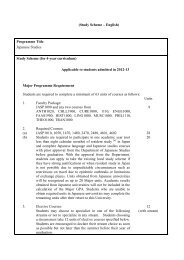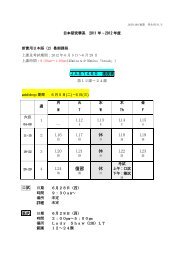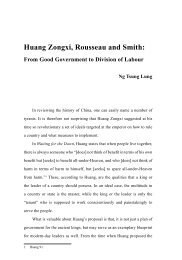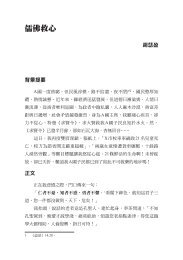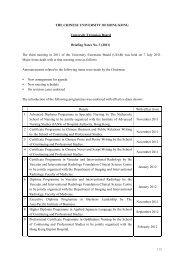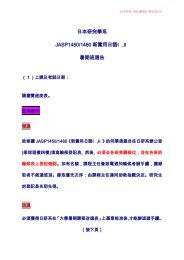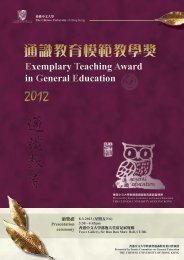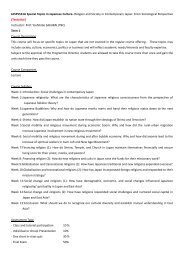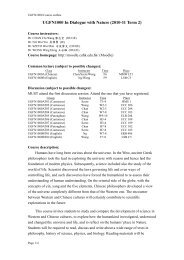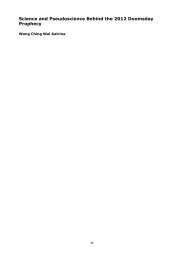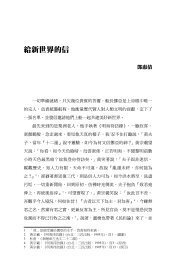ä¸è¼å ¨æ¸ - The Chinese University of Hong Kong
ä¸è¼å ¨æ¸ - The Chinese University of Hong Kong
ä¸è¼å ¨æ¸ - The Chinese University of Hong Kong
You also want an ePaper? Increase the reach of your titles
YUMPU automatically turns print PDFs into web optimized ePapers that Google loves.
Wyman Kwok, Education and Thinking 205<br />
Although the categorization <strong>of</strong> these four areas does not exactly correspond<br />
to that <strong>of</strong> the skills as put forth by the Delphi Report (interpretation, analysis,<br />
evaluation, and so on) as discussed in the previous section, it is not difficult to<br />
see that their actual contents have much in common. In fact, notwithstanding<br />
their differences in labeling, categorization, or format <strong>of</strong> presentation,<br />
different frameworks proposed by different CT textbooks or scholars are<br />
generally very similar in content.<br />
When teaching meaning analysis, my central message to students is the<br />
importance <strong>of</strong> using language skillfully and appropriately for correct ways<br />
<strong>of</strong> thinking. Examples <strong>of</strong> topics that I would cover are “the clarification <strong>of</strong><br />
meaning,” “using and evaluating definitions,” “linguistic pitfalls,” and so on.<br />
<strong>The</strong> treatment <strong>of</strong> linguistic pitfalls concerns analyzing defects in language<br />
that are harmful to correct ways <strong>of</strong> thinking. One type <strong>of</strong> linguistic pitfall<br />
is “conceptual distortion,” in which the distortion <strong>of</strong> existing meanings <strong>of</strong><br />
terms results in mistaken or misleading ways <strong>of</strong> thinking. Below, let us briefly<br />
examine an example <strong>of</strong> conceptual distortion.<br />
Thich Nhat Hanh, a famous expatriate Vietnamese Zen Buddhist<br />
monk, commenting on the state <strong>of</strong> existence <strong>of</strong> Buddha, made the following<br />
analogy:<br />
. . . farmers have already planted thousands <strong>of</strong> seeds [<strong>of</strong> sunflowers] . . . . <strong>The</strong><br />
sunflowers are there. <strong>The</strong>y lack only the conditions <strong>of</strong> sun, heat, rain, and<br />
July. Just because you cannot see them does not mean that they do not exist.<br />
(Nhat Hanh, 2007, p. 42)<br />
Are sunflowers something transparent that cannot be seen by human eyes<br />
Definitely not. In our normal use <strong>of</strong> language, what would we say about



